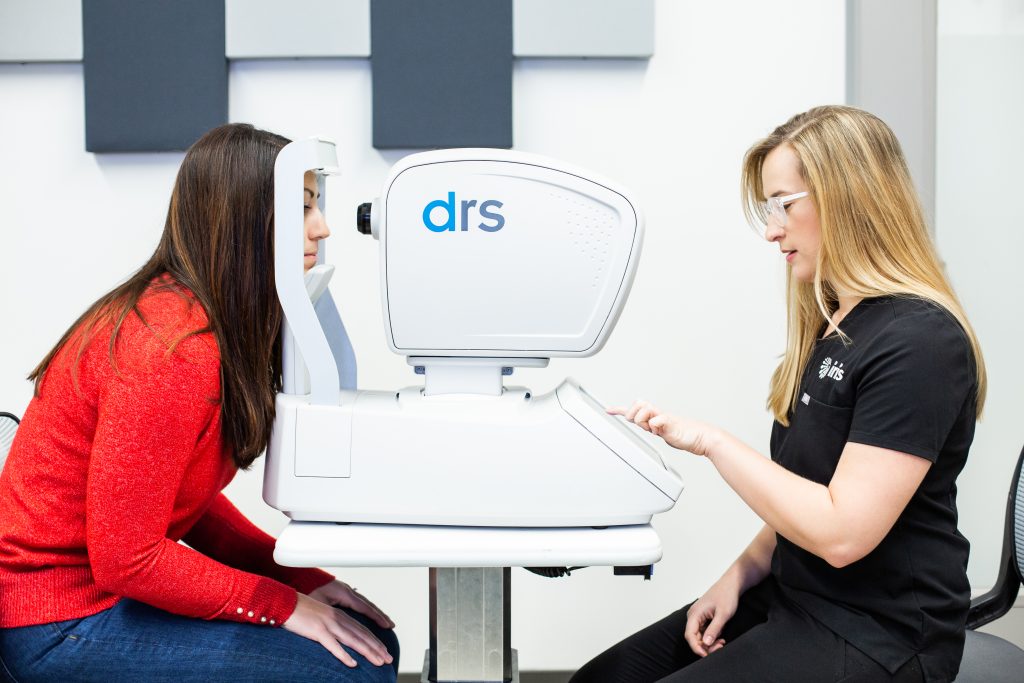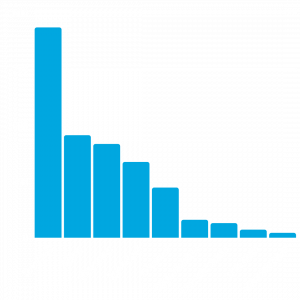Austin Regional Clinic

5 Million +
There are over 5 million people in the U.S. over the age of 40 who are currently at – risk for developing the sight-threatening disease diabetic retinopathy (DR). If caught early, DR is highly treatable. Unfortunately, less than half of people with diabetes receive the recommended annual eye exam, which has caused a substantial gap in care across the country.
Diabetic Retinopathy (DR) is caused by damage to the blood vessels in the retina, which is the tissue at the back of the eye. Elevated blood sugar levels can lead to damage and leakage of these blood vessels, which cause blurry vision and, in worst-case scenarios, blindness.
AUSTIN REGIONAL CLINIC
Austin Regional Clinic (ARC) is a multispecialty medical group committed to providing comprehensive healthcare services throughout the greater Austin area. Founded by three physicians in 1980, ARC now provides health care to over 530,000 area residents with 29 locations in seven cities, including primary and specialty care. ARC is unique to the Austin area because of its widespread locations, convenient services, and quality assurance programs.
THE CHALLENGE
Achieving compliance on the annual diabetic eye exam (DRE) has long presented challenges for primary care providers because historically, the exam was not administrable in a primary care office. For example, in the past, Austin Regional Clinic (ARC) attempted to achieve compliance with the DRE. Still, they were forced to rely only on their diabetic patients seeing an eye care specialist receive the exam.
Despite best efforts to get diabetic patients to see an eye specialist, only about 45% of ARC’s diabetic patient population received the annual screening, aligned with the national average of <50% compliance.
THE SOLUTION
Recognizing the need to increase access and to raise quality performance with the diabetic eye exam, Austin Regional Clinics partnered with Intelligent Retinal Imaging Systems (IRIS) in 2015 to provide DREs at the point of care. For the scan to be read by Austin Retina at the time, IRIS already had a successful track record of implementing its DRE solution in a primary care setting. Additional factors contributing to the selection of IRIS were step-by-step guidance during implementation and training, ongoing client support, reporting, tracking tools, and proven experience integrating with an EPIC EMR interface.
“Most importantly, we were looking for a company that acts more like a partner and not as a vendor.” Dr. Daghestani, CEO, ARC
The IRIS solution begins with the patient identification process through ARC’s EPIC EMR interface. Once a patient has been flagged as needing a DRE, it will alert the primary care physician at the time of the visit and allow trained ARC staff to administer the exam and the end of the visit or perform routine blood work. The test usually takes less than five minutes and typically does not require pupil dilation. The high-quality fundus images are then sent to IRIS’s cloud-based solution for interpretation. Next, a licensed eye care provider reviews both the original and enhanced images using IRIS’s FDA-cleared class II diagnostic telemedicine platform. Lastly, the diagnostic results and referral recommendations are delivered back to the ordering provider through the EPIC interface, and data is sent for billing and referral.
THE RESULTS
The first IRIS exam administered at ARC was on August 18th, 2015. In the remaining months of 2015, the three
ARC cl inics that were live with an IRIS program performed 1,112 diabetic retinopathy exams. 244 of those patients were diagnosed with diabetic retinopathy.
inics that were live with an IRIS program performed 1,112 diabetic retinopathy exams. 244 of those patients were diagnosed with diabetic retinopathy.
 In the first six months of 2016, after three additional ARC clinics implemented the IRIS solution, 1,769 exams were administered, resulting in 336 diabetic retinopathy diagnoses.Austin Regional Clinic has a unique relationship with the local retina specialty group, Austin Retina Associates who provide remote interpretations for their exams. Although this partnership works well for ARC, an existing relationship with local eye care is not required. The IRIS Reading Center (IRC) maintains a network of over 120 board-certified interpreting providers, licensed in every state. Regardless of which avenue clients opt for, the importance of using a human grader remains central to providing excellent care and accurate results for patients. One of the main reasons the IRIS solution requires human interpretation is to include “other suspected pathology” in results reports.
In the first six months of 2016, after three additional ARC clinics implemented the IRIS solution, 1,769 exams were administered, resulting in 336 diabetic retinopathy diagnoses.Austin Regional Clinic has a unique relationship with the local retina specialty group, Austin Retina Associates who provide remote interpretations for their exams. Although this partnership works well for ARC, an existing relationship with local eye care is not required. The IRIS Reading Center (IRC) maintains a network of over 120 board-certified interpreting providers, licensed in every state. Regardless of which avenue clients opt for, the importance of using a human grader remains central to providing excellent care and accurate results for patients. One of the main reasons the IRIS solution requires human interpretation is to include “other suspected pathology” in results reports.
If ARC did not have a DRE solution relying on human interpretations, 2,439 patients with other suspected pathology would
not have been notified and could have suffered from unnecessary disease progression.
2016
At the end of 2016, after the first full year of using the IRIS solution, ARC CEO Dr. Daghestani reported 55% of patients with diabetes had received the exam. This is a noticeable improvement from the 45% compliance they saw before introducing the IRIS solution just over a year prior.
 2017
2017
By 2017, the IRIS solution could be found in nine of the twenty-one Austin Regional Clinic locations. Camera placement has been determined by the volume of diabetic patients and the number of physicians at each location.
2019
In 2019, two additional ARC sites adopted the IRIS solution, bringing eleven tabletop cameras across the organization.
2020
Despite a COVID-19 induced slowdown in capturing patient exams, ARC grew IRIS exam volume by 3.8% year over year in 2020.
CONCLUSION
Since implementation, this program continues to exceed its goal of providing easy access to much-needed diabetic eye care, saving eyesight, creating a high level of patient and physician satisfaction, as well as a steady increase in STAR ratings and Medicare and commercial ACO quality measures performance. ARC is now achieving a significantly higher compliance percentage as compared to pre-implementation with IRIS. Furthermore, since the program’s inception, ARC has seen over 4,000 patients with RAF eligible diagnoses, which have allowed for the maximization of its quality and shared saving performance from their risk-based contracts. Additionally, positive results in the early stages of the partnership demonstrated the value of implementing the IRIS solution, accelerating the ability for additional clinics to adopt the program.
Dr. Daghestani has remained a program champion for Austin Regional Clinics’ DRE program since 2015. When asked about the program’s impact, he said, “All people with Type 1 and Type 2 diabetes are at risk for this disease, which means blindness is a real possibility for tens of thousands of persons in the Austin community. Between 40 to 45% of Americans diagnosed with diabetes have some stage of diabetic retinopathy, and the rate of blindness is about 2%. This means that for every 1,000 patients screened; we’ve prevented 20 people from becoming blind. Challenges and obstacles such as ‘I don’t have time for another appointment’ or ‘I’m too young to worry about eye disease’ are no longer valid. Diabetic patients in our clinics who have not yet had their annual screening can and will get one at the time of the visit with their PCP and/or at the time of getting their diabetic blood work.”
“Between 40 to 45% of Americans diagnosed with diabetes have some stage of diabetic retinopathy and the rate of blindness is about 2%. This means for every 1,000 patients screened, we’ve prevented 20 people from becoming blind.” Dr. Daghestani, CEO, ARC
Get started with IRIS today.
Want to know if IRIS is right for you? Schedule a one-on-one consultation with our team. We’re here to help.